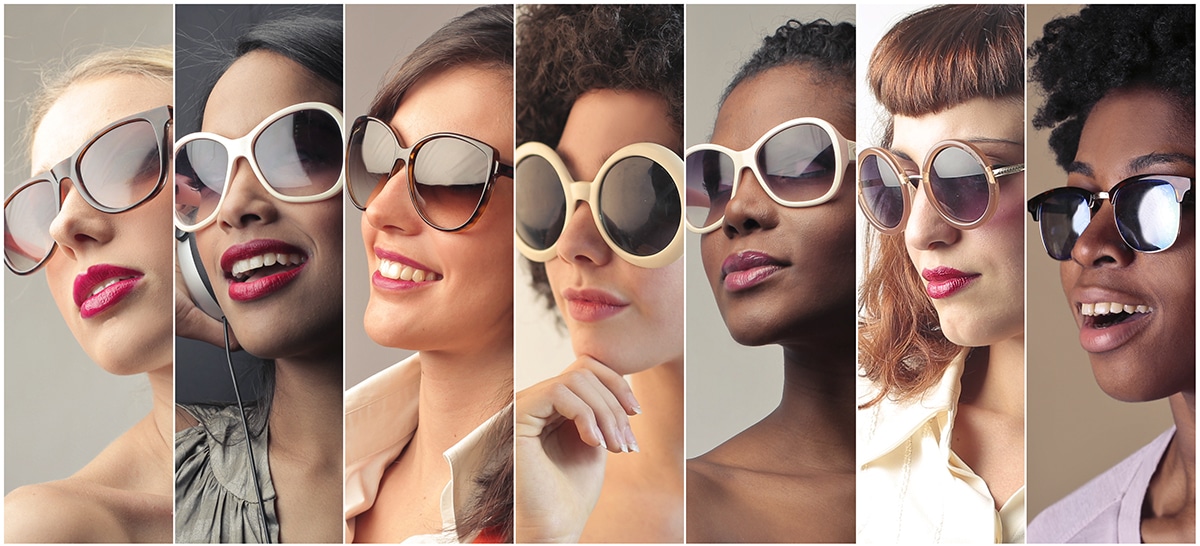Skin cancer is the most commonly diagnosed cancer in North America, and up to 10% of skin cancers are found on the eyelids.¹ Protecting this delicate skin from the sun’s harsh UV rays can be difficult, as this region may be sensitive to ordinary sunscreen. Besides using an eye cream with SPF, sunglasses and eyeglasses can help. We don’t get sunburned from behind glass, and it’s a similar concept with wearing glasses. However, just because you wear ordinary eyeglasses doesn’t mean that your eyes and the skin around them are fully protected from the sun.
If you wear eyeglasses, one step you can take to protect your eyes from harsh UV rays is to ask for a UV-protective coating to be added to your lenses. Like window glass, regular glass lenses without a UV-protective coating block out most UVB rays, but allow most UVA rays to pass through. On the other hand, regular plastic lenses without a UV-protective coating offer no protection against UV rays.² Another option is to consider photochromic or transition lenses. These lenses automatically darken when exposed to UV light, and block out 100% of UV rays.³If you wear contact lenses rather than eyeglasses, consider opting for UV-protective contact lenses. These are regulated by the FDA and are split into two classes. Class I lenses block 90% of UVA and 99% of UVB, while class II lenses block 70% of UVA and 95% of UVB.⁴ A downside to these, however, is that only the region of the eye beneath the contact lens is protected from UV rays, leaving the rest of the eye and the skin around it susceptible to sun damage. Whether you wear regular or UV-protective contact lenses, it’s recommended to also wear UV-protective sunglasses to ensure that all of your eye and the skin around it is protected from the sun.
Whether you’re wearing contact lenses or glasses or both, it’s wise and worthwhile to apply an eye cream with SPF to the region around your eyes. Unless you’re wearing wraparound sunglasses, it can be hard to shield your eyes and the skin around them completely. Applying an SPF as a base in this area helps to prevent damage caused by UV rays sneaking around sunglasses and contact lenses. Sun Index is a free app available for iOS and Android that lets you know which methods of sun protection you should use to stay safe in the sun, based on your skin type and location.Sources:
- Skin Cancer Foundation. (2011). Detecting and Preventing Eyelid Skin Cancers. Retrieved July 27, 2017
- Heiting, G. (2017). Eyeglass Lens Coatings: Anti-Reflective, Scratch-Resistant, Anti-Fog and UV. Retrieved July 27, 2017
- Heiting, G. (2016). Photochromic Lenses: Transitions Lenses And Other Light-Adaptive Lenses. Retrieved July 27, 2017
- American Optometric Association. (n.d.). UV Protection with Contact Lenses. Retrieved July 27, 2017



